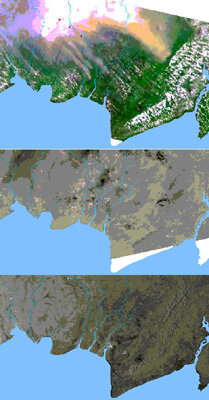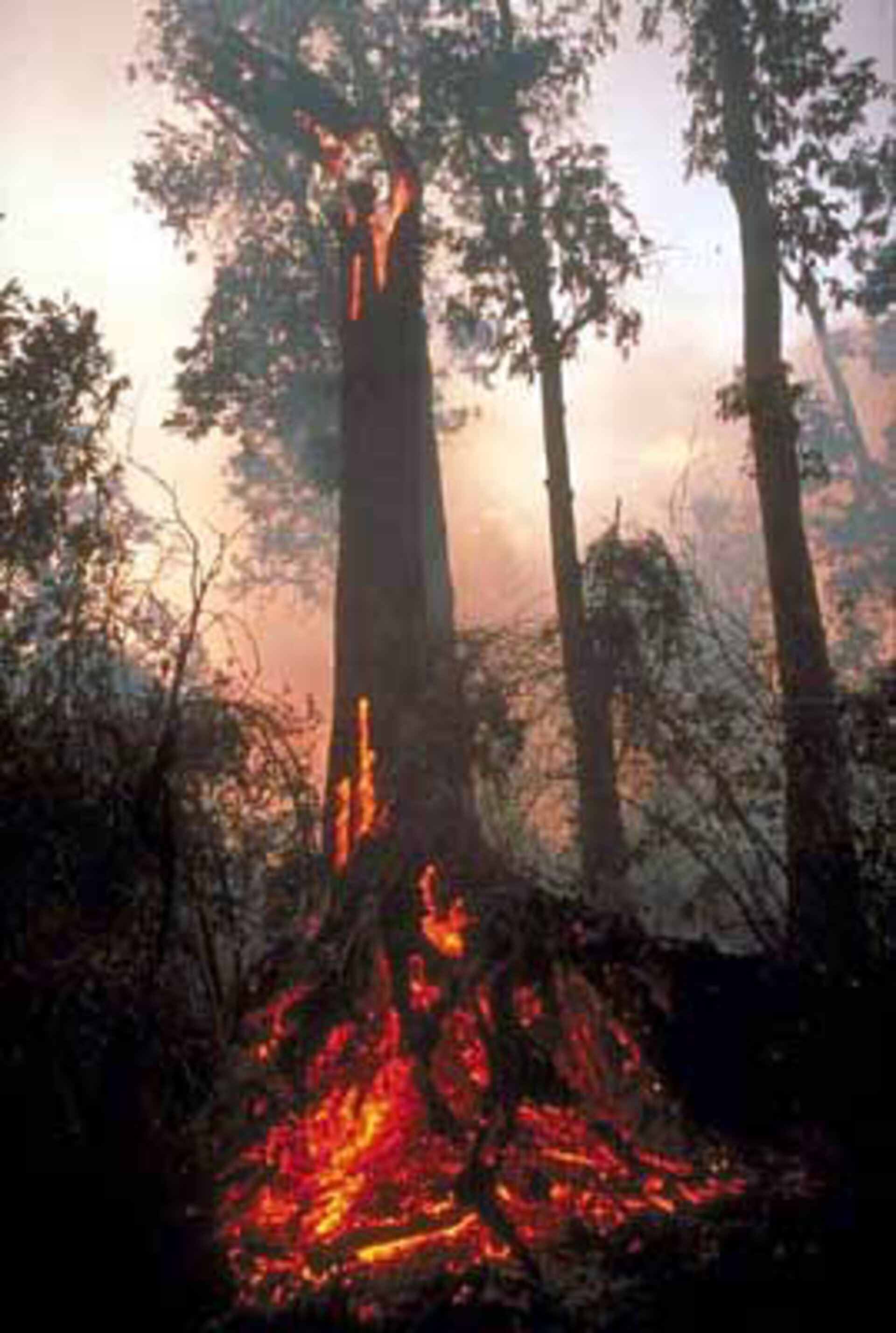Fire mapping
Major fires are visible from space – satellites detect not only the smoke billowing from major conflagrations but also the burn scars left in their wake and even the fires themselves – appearing as 'hotspots' when scanning the Earth's surface in infrared wavelengths.
The long hot summer of 2003 had disastrous consequences for Europe's forests, sparking massive blazes across the continent. With many millions of Euros worth of damage done, assessing the full scale of destruction was a task in itself, but satellites have a demonstrated ability to provide rapid mapping of burnt areas.
During the height of the fires in early August, Portugal’s Civil Protection Agency invoked the International Charter on Space and Major Disasters to request satellite images of the blazes. Envisat’s Medium Resolution Imaging Spectrometer (MERIS) instrument acquired the images needed, which were then relayed via the Artemis communication satellite to ESA’s Frascati ground station in Italy where they were processed and passed directly to Portuguese authorities.
Once the blazes were over, MERIS was employed once again to provide speedy estimates of the total area affected. This was performed using 250-metre resolution post-fire images of the whole of Portugal and segmenting and classifying the entire land surface according to a standardised vegetation index to identify the burnt zones.

A total burnt area of 347 973 hectares as of late August was derived from this process, larger than a third again than the whole of Luxembourg, and broadly agreeing with estimates based on land-based sources. A similar fast track damage estimate was carried out for the aftermath of fires in the South of France and Corsica.
This fast-track estimation exercise for the two countries builds on ESA’s previous experience of mapping burnt forest areas of Italy between 1997 and 2000, for a project in co-ordination with the Italian Civil Protection Agency called ITALSCAR.
The exercise also anticipated a new project called Risk-EOS, part of the Services Element of the joint ESA-EU Global Monitoring for Environment and Security (GMES) initiative. The purpose of Risk-EOS was to use Earth observation data to provide European civil protection agencies with early warning of forest fires as well as other threats.
As well as pre-fire risk mapping and post-fire damage assessment, the eventual aim of Risk-EOS and similar activities is to provide real-time operational information to fire fighters as they fight forest blazes.









